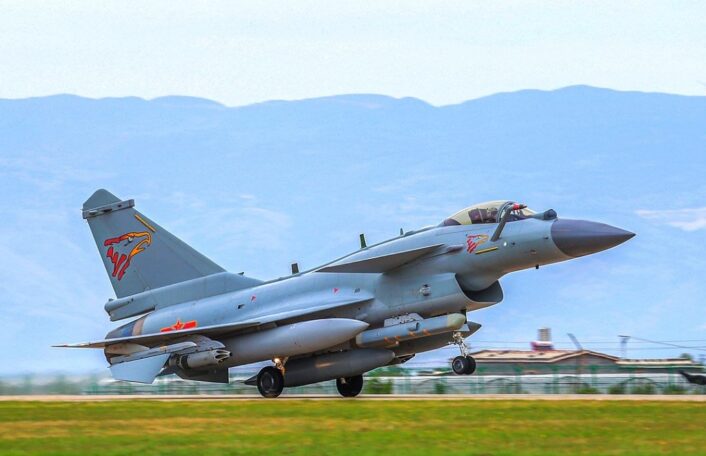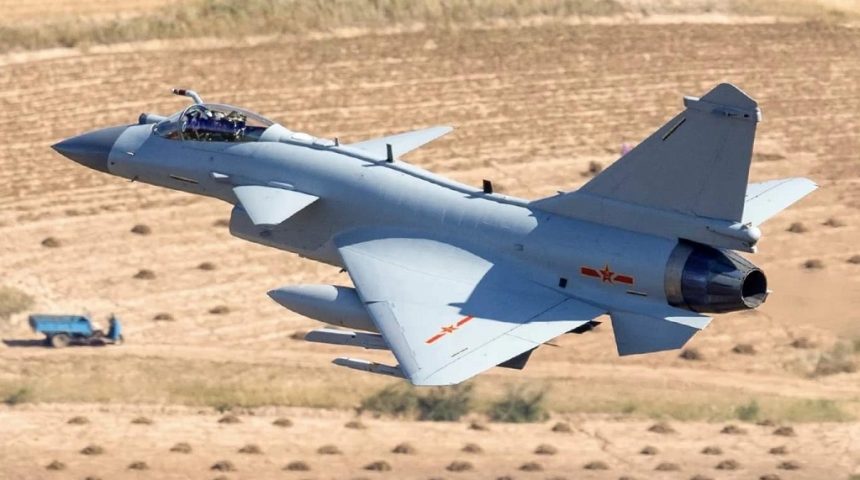Pakistani Interior Minister stated that 25 fighters will be delivered by March to counter Indian Rafales.
After years of rumors, it looks like Pakistan might be getting the Chinese Chengdu J-10 fighter jet for real. On Dec. 29, 2021, Pakistani Interior Minister Sheikh Rasheed Ahmed announced during a public event that the Pakistan Air Force will perform a fly-over for the Republic Day parade on March 23, 2022 with 25 “JS-10” jets newly purchased from China to counter the Dassault Rafale jets bought by India.
The news was first noted in the west by Forbes, as it initially went unnoticed due to being diffused only in the Pakistani regional media. Neither Pakistan nor China confirmed the deal and details about it are very scarce. The variant that will be acquired by the PAF should be the FC-20E, the export variant of the J-10C that, according to the Minister, is “far superior to the Rafale” thanks to the AESA (Active Electronically Scanned Array) radar and PL-15 dual-pulse long-range air-to-air missiles.
Also, we don’t have precise info about the number of J-10s acquired, as the Minister mentioned 25 aircraft but other sources states that the Pakistan Air Force will receive a total of 36 aircraft to equip two squadrons with 18 each. According to the Minister’s speech, the first squadron will be fully equipped by the Republic Day. While this might seem a very short time for such a large delivery, the fighters might have already been built for the PLAAF and redirected for Pakistan before their delivery happened or the deal might have been signed long time ago and kept secret.
The J-10, also known as Vigorous Dragon, was first offered to Pakistan in 2006, but the negotiations were stalled as the government decided to concentrate resources on the indigenous JF-17 Thunder. In late 2020 it was revealed that Pakistan was still interested in the J-10, and specifically the export variant of the J-10C, called either J-10CE or FC-20E. Some sources claim that Pakistan was working to get its own variant, possibly called J-10CP, but this was not confirmed.

The delta-wing J-10 flew for the first time in 1998, with almost 500 built so far for the People’s Liberation Army Air Force. Given its appearance, many believe that the aircraft developed from the Israeli IAI Lavi, with various sources claiming that they had confirmation about the connection between the two aircraft and other denying everything. However, no formal statements have ever been disclosed to address this controversy.
The Lavi, which was designed as a strike fighter aircraft in the same class of the F-16 Fighting Falcon, was planned to become the main fighter aircraft of the Israeli Air Force, however the program was cancelled in 1987, a year after its first flight, due to economic controversy. Much like the J-10, the Lavi had a delta wing design with canards and an air inlet with splitter plate under the fuselage, just below the cockpit.
The J-10 has been upgraded through the years, with the J-10C variant now featuring AESA radar, IRST (Infrared Search and Track) sensor, advanced ECM (Electronic Counter Measures) and an indigenous WS-10 engine to replace the Russian al-31FN engine used by earlier variants. As for the armament, the J-10C is reportedly equipped with PL-10 and PL-15 air-to-air missiles as well as various types of smart air-to-ground weapons. Many of these weapons are also shared by the JF-17.









